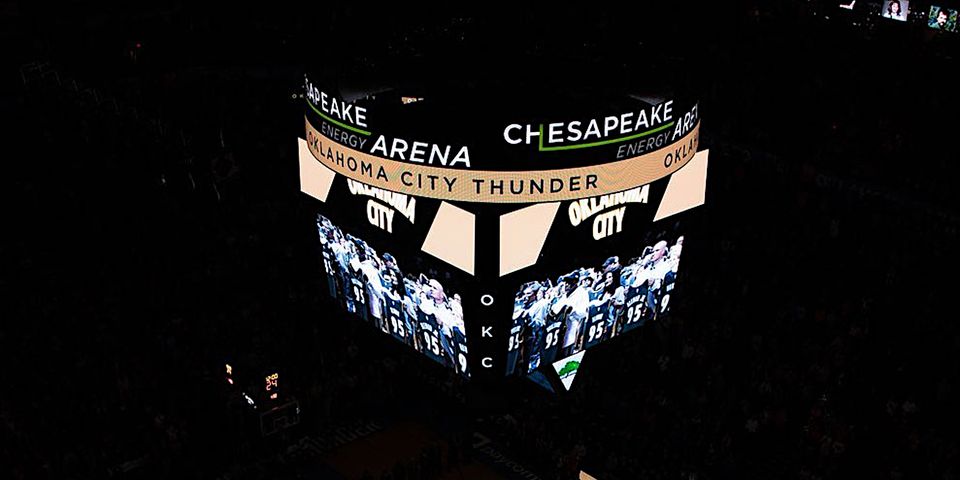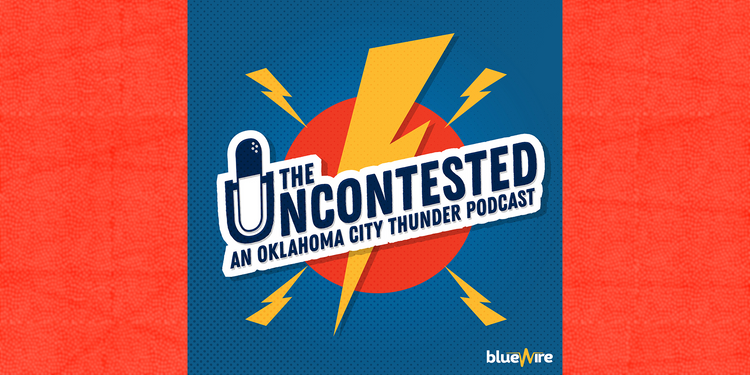Chesapeake Energy’s Bankruptcy: What It Means for the Thunder

If you’re even a casual NBA fan, you’ve heard of Chesapeake Energy. In 2006, the late Aubrey McClendon, then chief executive officer of Chesapeake Energy, was a part of the group that purchased the Seattle Supersonics (and Seattle’s WNBA team, the Storm) from Starbucks founder, Howard Schultz. McClendon’s stake in the ownership group became national news when a group email including McClendon and Clay Bennett, the Thunder’s largest stakeholder, was released. In that email, Bennett told the other owners that he was a “man possessed” to get the Sonics relocated to Oklahoma City, to which McClendon enthusiastically expressed his support for the move.
Ever since then, McClendon’s company, Chesapeake Energy, has been as intertwined with the Thunder as any other company, starting with the company being named a “founding partner” in 2008. Chesapeake Energy followed this up by securing the naming rights to the home arena for the Thunder in July 2011. In addition, Chesapeake Energy holds a number of season tickets, and its employees are likely a noteworthy part of the Thunder’s season ticket base.
So, when Reuters reported that Chesapeake Energy will be filing for bankruptcy, as soon as this week, the news not only sent shock waves through the oil and gas industry, but also through Thunder nation.
But what does “bankruptcy” really mean?
What About Aubrey McClendon’s Ownership?
Before getting into the weeds, I wanted to make clear that Chesapeake Energy, the company, never had an ownership share in the Thunder. McClendon, individually, owned a reported 19% of the team, and after his death, his estate continues to own his share of the team. The bankruptcy filing will not affect this ownership stake.
A Primer on Bankruptcy
Notwithstanding the infamous clip from The Office where Michael Scott verbally declares bankruptcy, filing for bankruptcy is a bit more complicated than a mere expression.
There are two main ways a company can file for bankruptcy in the United States: Chapter 7 and Chapter 11. A Chapter 7 bankruptcy is known as a liquidation bankruptcy. After filing, the company’s operations will be wound-down, its assets will be liquidated or turned over to creditors, and the proceeds from the asset sales will be distributed to creditors in a specific order as mandated by federal bankruptcy law.
A Chapter 11 bankruptcy, which Chesapeake Energy will be filing, contemplates that the company will continue operating through the bankruptcy case. The ultimate goal in Chapter 11 is for the company to reorganize its debts so that the company will continue to operate and exist.
Chesapeake Energy’s Corporate Sponsorship
Terms of Chesapeake Energy’s corporate sponsorship as a “founding partner” are unknown, but it’s possible that any sponsorship agreement between Chesapeake Energy and the Thunder could be terminated in bankruptcy.
Filing a Chapter 11 bankruptcy gives an operating company (known as a debtor in possession) elevated rights as to its property existing as of the filing. One of those rights is the ability to “assume or reject” certain kinds of contracts–an executory contract. This right is valuable because it allows a company to shed a burdensome contract, and then the other party to that contract will be left with a claim for amounts owed to date.
Let’s use an example with a made-up number. Chesapeake Energy has a sponsorship agreement whereby it pays $1 million to the Thunder, and in exchange, the Thunder promotes Chesapeake Energy as a founding partner and allows them to advertise and market in various ways. If that contract is considered an executory contract by the bankruptcy court, then Chesapeake Energy will have the option to assume it (i.e., keep it) or reject it (i.e., terminate it).
It’s unlikely that the loss of a single sponsor, even a “founding partner,” would cause significant financial harm to the team, but it definitely isn’t good news for the organization. However, Chesapeake Energy could view the sponsorship agreement as valuable and want to keep it.
Chesapeake Energy’s Naming Rights
The same analysis applies to the naming rights agreement. Under the 12-year naming rights agreement which expires in 2023, Chesapeake Energy paid $3 million for the first year with 3% escalators. By my back of the napkin math, the 2020 payment would be nearly $4 million, with the vast majority of that going to the team.
After bankruptcy, Chesapeake Energy will have to decide whether they want to keep this agreement or terminate it (assuming that the bankruptcy court views the contract as executory). So, it’s a great unknown if the Thunder will enter the 2020-21 season playing at Chesapeake Energy Arena or some other name for the Thunderdome, but the bankruptcy does not guarantee that the arena will undergo an immediate name change.
In addition, the practical issues in changing the name are significant. Significant costs will be incurred to remove signage, repaint exterior references, change all printed materials, create new graphics, and then costs on the other side to replace all of that with the new name. However, this has happened before. After the team moved to Oklahoma City from Seattle, the Thunder exercised its right to terminate the naming rights deal for the “Ford Center,” and for an entire season the team played at the “Oklahoma City Arena.” It’s possible that, if the naming rights agreement is terminated in bankruptcy, a generic name may be slapped on the venue until a new agreement is in place.
Other Issues
It’s probable that the bankruptcy filing will result in some number of layoffs or reduction in workforce. Unfortunately, Chesapeake Energy has for a long time employed thousands of Oklahomans at good wages. While the vast majority of employees will likely keep their jobs during bankruptcy, it still does not diminish the individual impact felt by those who may lose their jobs.
Moreover, the filing of Chapter 11 isn’t a guarantee that the version of the company that went in to bankruptcy will be the same coming out. Sometimes, a bankruptcy leads creditors to realize that the company isn’t worth reorganizing, but would be better sold either in whole or in parts.
Bankruptcy cases are complicated. The key parties in the case include more than just the bankrupt company, but also its secured creditors (creditors who have a lien on the company’s property) and its unsecured creditors (usually led by a “committee” who advocate for unsecured creditors to get as much as possible in the bankruptcy case). The hopeful goal in a Chapter 11 case is that the company can successfully negotiate with all of its creditors and then get approved a “Plan of Reorganization” which specifies what creditors and equity holders get in the bankruptcy case and the parameters that the company must follow to exit bankruptcy. But realizing that goal requires significant negotiations with parties who have very different interests.
Chesapeake Energy has been a critical part of the Thunder’s past, but many questions remain as to whether the company will be a part of the Thunder’s future.
AUTHOR’S NOTE: I have to admit that I’m a reformed bankruptcy lawyer. I practiced primarily in Texas for over six years, and have represented Chapter 11 debtors, creditors, and landlords. I no longer practice in this area of law, but thought I would lend a little bit of my memory of my past life. This article is for educational and informational purposes only, and is not intended or to be construed as legal advice.


